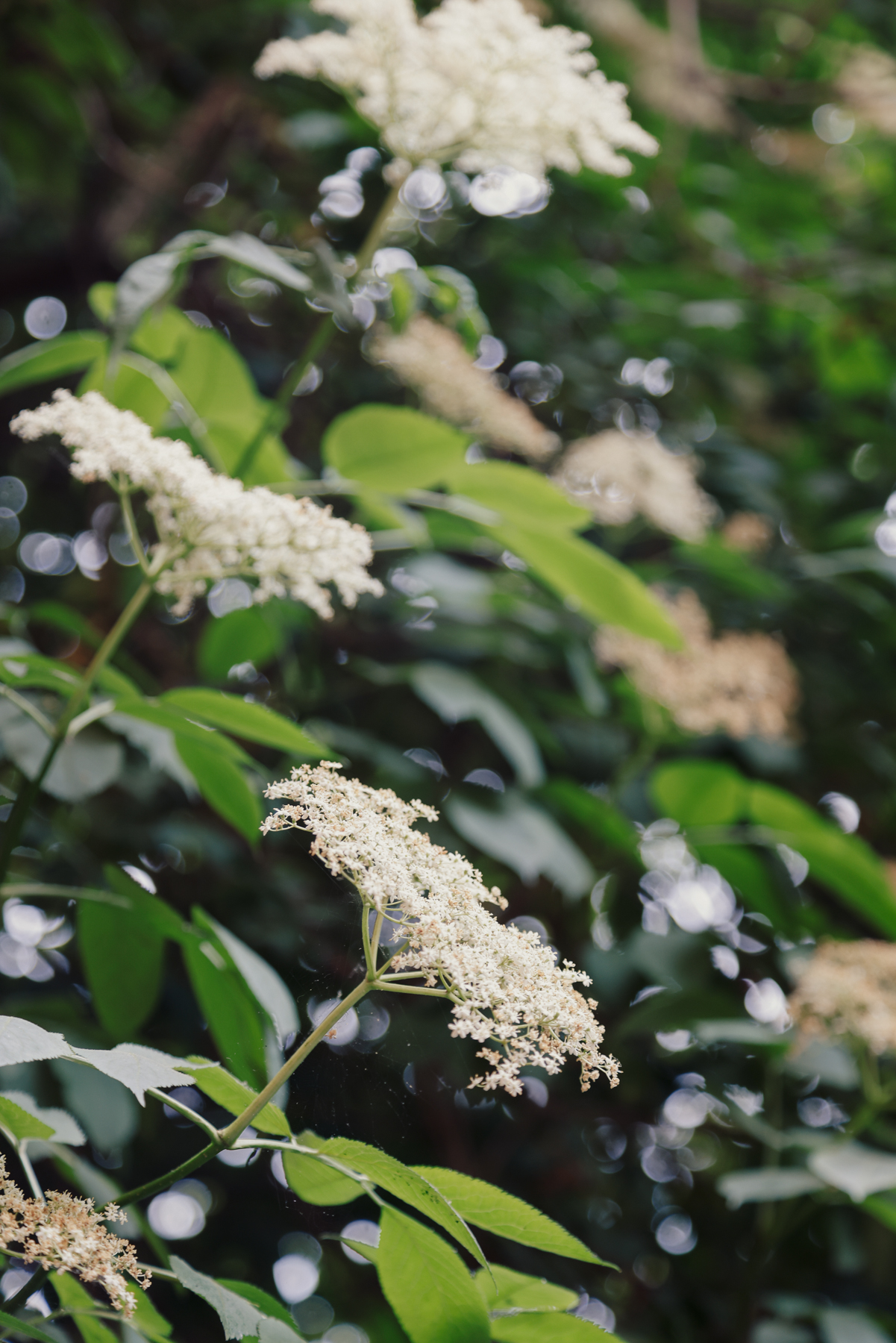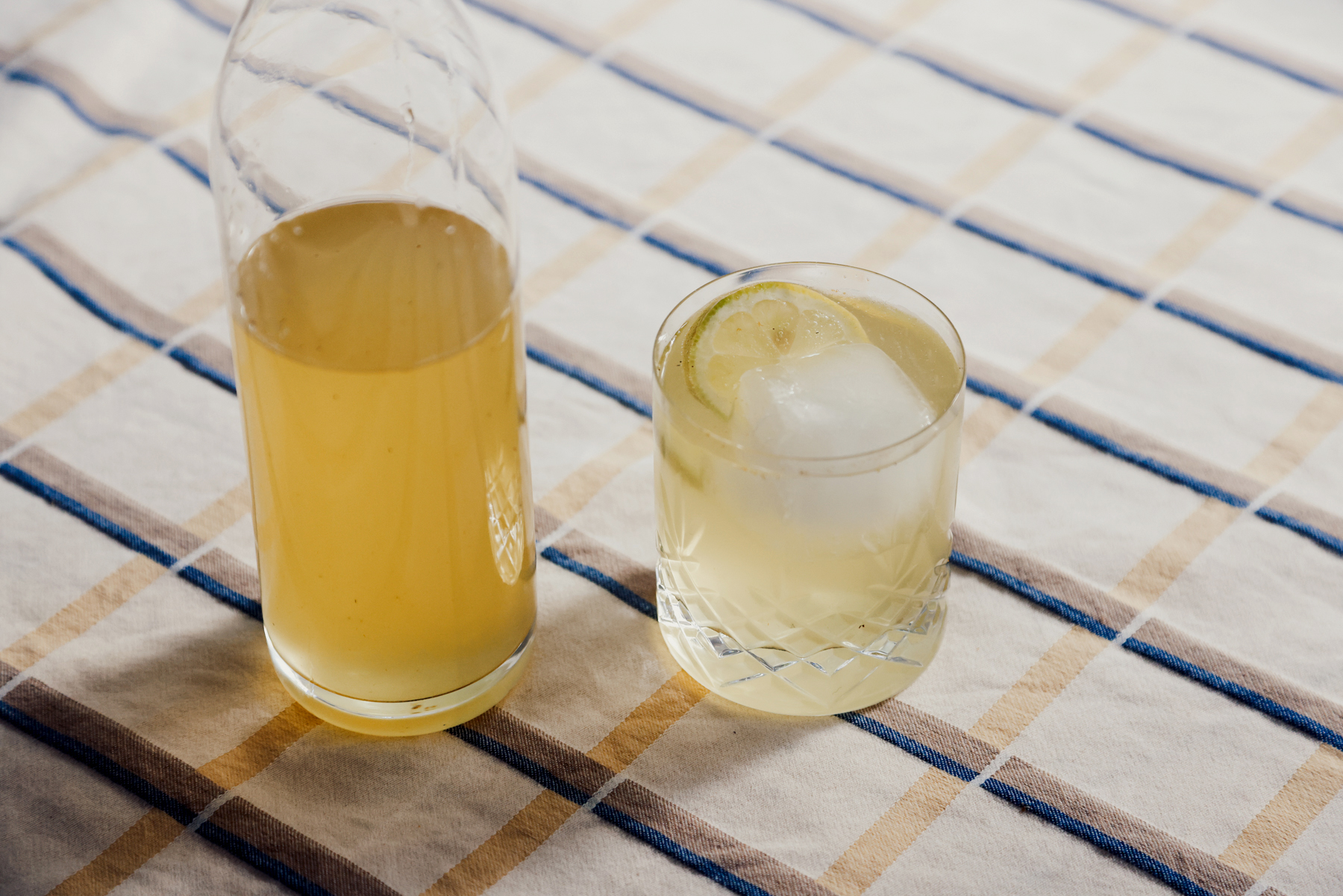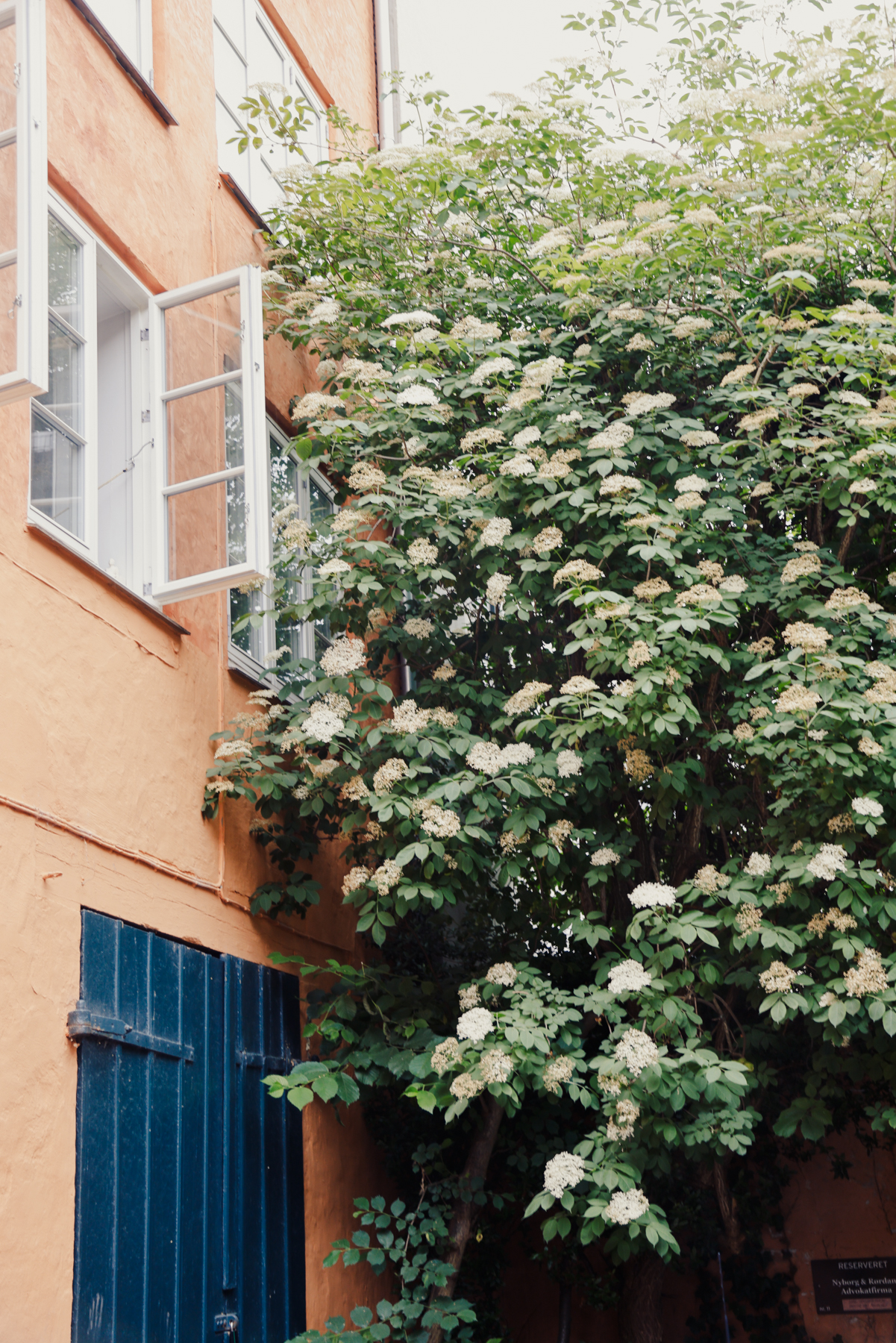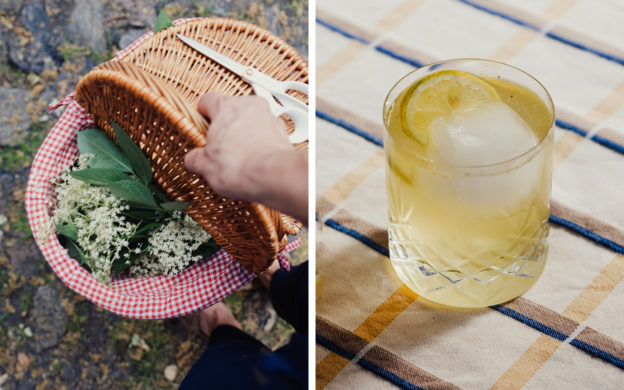Elderflower has long been revered in Scandinavia and across northern Europe, and not just because its fragrance signifies the start of summer. This reverence is so ancient, that funeral flints in the shape of Elder tree leaves have been found dating as far back as 2,000 BC.
According to tradition, Hyldemoer, the powerful nymph Elder Mother, resided in the Elder tree and could bestow blessings as well as punishments upon people.
The deciduous tree was believed to ward off evil and bring good fortune to expectant mothers. Dried Elder tree leaves are meant to protect the home when hung over a threshold.
In addition, elderflower has been widely believed to be medicinal across a range of ailments, from tooth pain to swollen sinuses.
While today most Scandinavians no longer hold many of these ancient beliefs, such as politely greeting the elder when you come upon it, the sambucus nigra is still widely beloved for its beauty, bouquet, and taste.
Let’s dive into elderflower: what it is, how it tastes, and the recipe for elderflower cordial (also known as elderflower syrup):
What is elderflower?
As the name implies, elderflowers are the delicate blossoms of the Elder tree, or Sambucus nigra in Latin. The flowers have five tiny petals, a creamy white shade, and grow in clusters called umbels (think: umbrella-shaped).
They’re native to Europe and North America, and bloom from May to late June – rain and sunshine dependent, of course. You may even find some elderflower bushels in July if the bush is north-facing.
When elderflowers at are their most aromatic, it’s impossible not to notice their sweet, floral scent.
 |  |
What does elderflower syrup taste like?
“Elderflower takes like royalty!” says anyone who was glued to Meghan Markle and Prince Harry’s fairytale nuptials in 2018. Their wedding had an untraditional lemon-elderflower cake with buttercream and fresh flowers.
Unlike other edible flowers, elderflowers have a subtle floral flavor. Some describe them as heady or perfume-y, but to many they simply taste of spring.
What can you make with elderflowers?
Elderflower has many culinary uses but most typically it is infused into drinks and liqueurs, added to sauces and creams, or incorporated into desserts like trifles, sorbets and cakes.
In Scandinavia, the seasonal blossom is usually made into a refreshing saft; a cordial or syrup that can be added to water or other liquids. It’s called fläderblomssaft in Sweden, hylleblomstsaft in Norway, seljankukkamehu in Finland and hyldeblomstsaft in Denmark.

What are the Nordic words for elderflower?
Elderflower is translated as:
|
|
|
|
|
|
|
|
Is elderflower good for you?
Utilized for centuries in traditional medicine to treat a variety of respiratory and digestive issues, elderflowers are high in antioxidants and rich in vitamin C.
The flowers, and berries, have antiseptic and anti-inflammatory properties and may be able to lower cholesterol, reduce joint pain, and fight methicillin-resistant Staphylococcus aureus (MRSA).
Research into these areas is promising but incomplete, so make sure to talk to your doctor before using elderflower in a medicinal way.
 |  |
Is elderflower poisonous?
Elderflower should not be consumed raw as it is mildly toxic in this state.
When cooked, however, the flowers are safe to eat.
If you are pregnant or concerned about possible effects, consult your doctor before consuming!
|
|
|
|
 |  |
When is elderflower season?
Elderflower season starts in May and ends in late June in Europe and North America. The season can shift a bit due to to weather or lack of sunshine.
When is the best time to pick elderberry flowers?
It’s usually the best time to pick elderberry in early to mid-June. Pick the flowers when they have blossomed, but before they go brown (and start to smell like pee!). You’ll notice that the stems have a slight white-colored tinge to them.

How to make elderflower syrup
Want the best elderflower syrup recipe? Try this one to make it easily at home.
This recipe makes 1 litre elderflower syrup. Feel free to divide or multiple the recipe as needed.
Elderflower syrup ingredients
500 grams granulated white sugar
2 large lemons
15 – 20 umbles of elderflower
1.5 tsp citric acid
Elderflower syrup step-by-step
![]() Clean but do not rinse the elderflowers, as rinsing with water will result in loss of flavor
Clean but do not rinse the elderflowers, as rinsing with water will result in loss of flavor
Pro tip: Elderflower pollen adds flavor to the cordial so be sure to handle the flowers with care when cleaning and transferring to the pot.
![]() Remove the elderflowers from the stems; pick off any insects and dirt
Remove the elderflowers from the stems; pick off any insects and dirt
![]() Add water and sugar to a medium to large pot
Add water and sugar to a medium to large pot
![]() Stir together and bring the pot to a boil
Stir together and bring the pot to a boil
![]() Allow sugar and water mixture to simmer for 10 minutes
Allow sugar and water mixture to simmer for 10 minutes
![]() Add citric acid, lemon zest from one lemon, and juice from one lemon to the pot
Add citric acid, lemon zest from one lemon, and juice from one lemon to the pot
![]() Slice the second lemon
Slice the second lemon
![]() Combine the slices from the second lemon with the elderflowers in a water-tight container. Make sure that the flowers are submerged in the syrup. Cover the container
Combine the slices from the second lemon with the elderflowers in a water-tight container. Make sure that the flowers are submerged in the syrup. Cover the container
Pro tip: Place the elderflower at the bottom of the container, below the lemons, to enhance cordial flavor and prevent the browning of petals.
![]() Store in a cool, dry place for 12 – 72 hours
Store in a cool, dry place for 12 – 72 hours
![]() Sieve out the flowers and lemons. You can use a mesh if you prefer to remove all impurities
Sieve out the flowers and lemons. You can use a mesh if you prefer to remove all impurities
![]() Funnel into a clean jar or bottle that can be fully closed. The syrup can be kept in the fridge for 3 – 4 months. Remember to shake the bottle before using.
Funnel into a clean jar or bottle that can be fully closed. The syrup can be kept in the fridge for 3 – 4 months. Remember to shake the bottle before using.
Pro tip: freeze the syrup in an ice cube tray and defrost as needed!
![]() To use your elderflower syrup to create a simple elderflower juice or soda, add one part syrup to approximately 8 parts (or, to taste) water or sparkling water.
To use your elderflower syrup to create a simple elderflower juice or soda, add one part syrup to approximately 8 parts (or, to taste) water or sparkling water.
The syrup can also be drizzled over pancakes, waffles, ice cream, or anything else you heart desires!
Want to learn more about Scandinavian food? Find out about Danish, Swedish, and Norwegian food traditions.
Photography and film by Freya McOmish.

